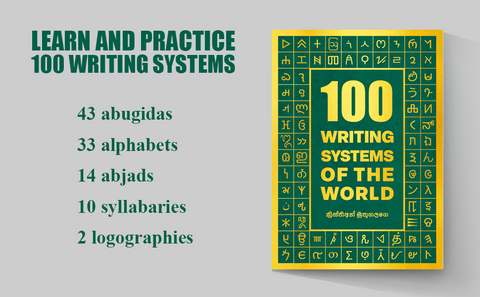Unlocking the Mysteries of Meitei Mayek: The Ancient Script of Manipur

Script type: Meitei Mayek is an abugida, a type of writing system where each consonant symbol carries an inherent vowel sound, and additional diacritic marks are used to modify the vowel sound.
Writing direction: Meitei Mayek is traditionally written from left to right, with each syllable forming a connected sequence of characters.
Creator and invention time: The Meitei Mayek script is believed to have been created in the early 14th century by King Loiyamba of Manipur, a northeastern state in India. The exact invention time is not clear, but it was during the reign of King Loiyamba that the script began to gain prominence.
Time period of use: The Meitei Mayek script has been in use for several centuries, making it one of the oldest scripts in India. It has played a crucial role in recording the history, literature, and culture of the Manipuri people.
Population and current usage: The Meitei Mayek script is still actively used by the Manipuri people in India, particularly in the state of Manipur. It holds immense cultural and historical significance and is an integral part of various religious and cultural practices.
Usage area: Meitei Mayek is predominantly used for writing Manipuri (Meiteilon), the official language of Manipur. It is also used for transcribing religious texts and manuscripts, as well as in local artistic expressions.
Interesting Facts:
-
Ancient Heritage: Meitei Mayek is a unique and ancient script, reflecting the rich history and heritage of the Manipuri people. Its origins are linked to the formation of the Manipuri kingdom and the evolution of the Manipuri language.
-
Artistic Expressions: The script is not only used for functional purposes but also as a means of artistic expression. It adorns traditional Manipuri textiles, pottery, and other crafts, adding to the region's vibrant cultural landscape.
-
Epigraphic Evidence: Meitei Mayek has been found in ancient stone inscriptions and royal decrees, providing valuable insights into the historical events and social structure of ancient Manipur.
-
Adaptation and Modernization: Over the years, Meitei Mayek has undergone some modifications to accommodate new sounds and linguistic changes. Modern efforts to standardize and revitalize the script have ensured its continuity in the contemporary context.
-
Script Revival: The script faced challenges during periods of political upheaval, but efforts by linguists, scholars, and cultural organizations have revitalized its usage, making it an essential part of Manipur's identity.
Meitei Mayek represents not only the linguistic diversity of India but also the resilience of its people in preserving their cultural heritage. As a script with deep historical roots and ongoing relevance, it continues to play a crucial role in shaping the literary, religious, and artistic expressions of the Manipuri community. Through its continued usage and efforts in script revitalization, Meitei Mayek stands as a symbol of pride and identity for the people of Manipur, carrying forward the legacy of their ancestors for generations to come.

Practice Meitei Mayek and other scripts with our book "100 Writing Systems of the World"!
Discover 100 diverse writing systems from around the globe in one captivating book. Practice writing different scripts with full character charts and essential information provided. Let your imagination soar on the blank right pages as you explore 43 abugidas, 33 alphabets, 14 abjads, 10 syllabaries, and 2 logographic scripts. Dive into numeral systems and even design your own writing system. Immerse yourself in the beauty and diversity of global scripts today with "100 Writing Systems of the World." Unleash your creativity and order now!